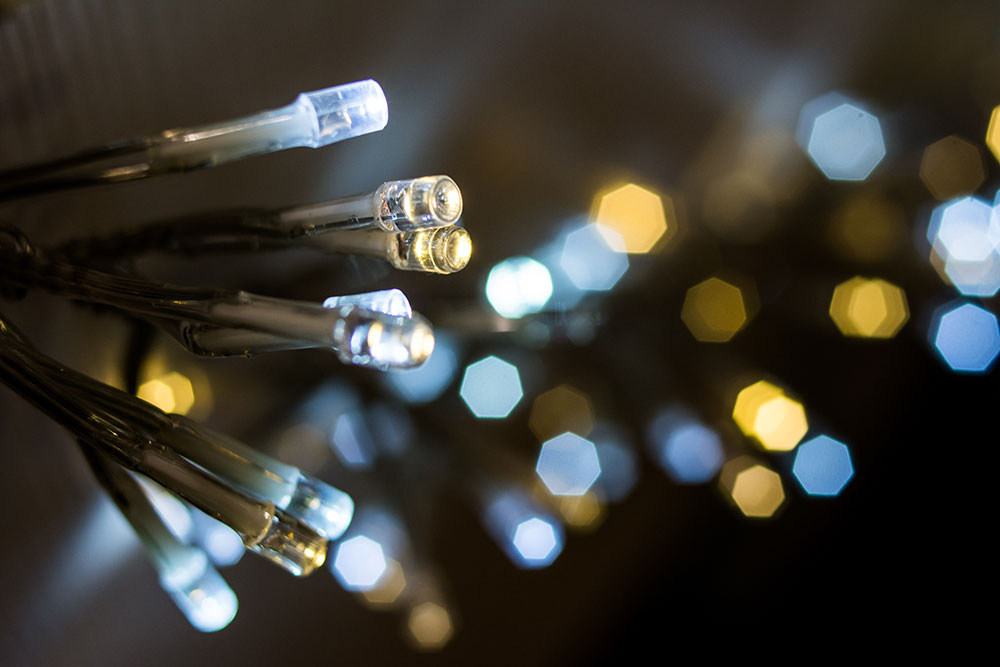Calendar Icon
Dec 17, 2019
Person Bust Icon
By Office of Research and Development
![]() RSS
Submit a Story
RSS
Submit a Story

Holiday lights are beautiful, but they also sap power. Estimates from the Department of Energy indicate Americans' holiday light use burns 6.6 billion kilowatt-hours annually–enough to fuel more than 800,000 homes for a year.
Luckily there are ways to mitigatepower usewithout turning into the Grinch, said Jerry Hudgins, interim director of the Nebraska Center for Energy Sciences Research and professor and chair of electrical and computer engineering.
Using LED lights rather than traditional incandescent bulbs yields significant savings, he said. They're more expensive up front, with an LED bulb costing about $1.50 compared to 25 cents for a same-sized regular bulb. But over time, the investment pays off: LEDs use up to 70% less energy than traditional lights, and they last roughly 10 times longer.
"Because of the lower electrical power requirements, LEDs cause fewer greenhouse gases to be emitted from electric power generation, and so are more environmentally friendly," Hudgins said.
Another power-saving tip is to put your outdoor lights on a timer, so that they're running during high-traffic times, when the greatest number of people will enjoy them. Hudgins pointed out that after midnight, few people are out and about to admire your display.
Beyond energy-saving tips, Hudgins recommends people stay safe with outdoor holiday displays by using extension cords that are rated for outdoor use and have the proper gauge wire size.
A lower number, or gauge, corresponds to a larger diameter wire and can handle a higher electrical load.
"A long extension cord with small gauge wire can overheat if the electrical load is too high," Hudgins said.
Submit a Story